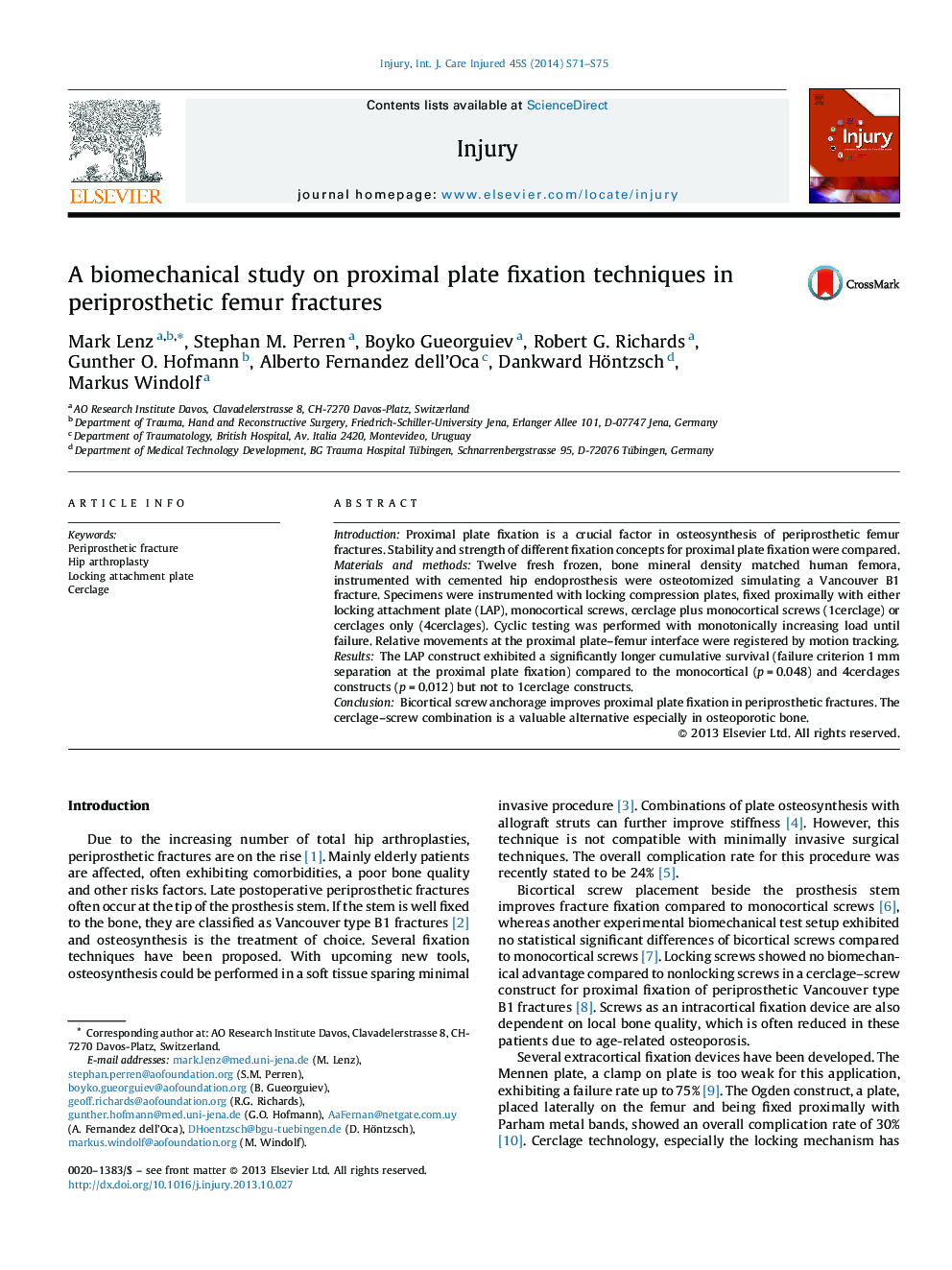| Article ID | Journal | Published Year | Pages | File Type |
|---|---|---|---|---|
| 3240110 | Injury | 2014 | 5 Pages |
IntroductionProximal plate fixation is a crucial factor in osteosynthesis of periprosthetic femur fractures. Stability and strength of different fixation concepts for proximal plate fixation were compared.Materials and methodsTwelve fresh frozen, bone mineral density matched human femora, instrumented with cemented hip endoprosthesis were osteotomized simulating a Vancouver B1 fracture. Specimens were instrumented with locking compression plates, fixed proximally with either locking attachment plate (LAP), monocortical screws, cerclage plus monocortical screws (1cerclage) or cerclages only (4cerclages). Cyclic testing was performed with monotonically increasing load until failure. Relative movements at the proximal plate–femur interface were registered by motion tracking.ResultsThe LAP construct exhibited a significantly longer cumulative survival (failure criterion 1 mm separation at the proximal plate fixation) compared to the monocortical (p = 0.048) and 4cerclages constructs (p = 0.012) but not to 1cerclage constructs.ConclusionBicortical screw anchorage improves proximal plate fixation in periprosthetic fractures. The cerclage–screw combination is a valuable alternative especially in osteoporotic bone.
